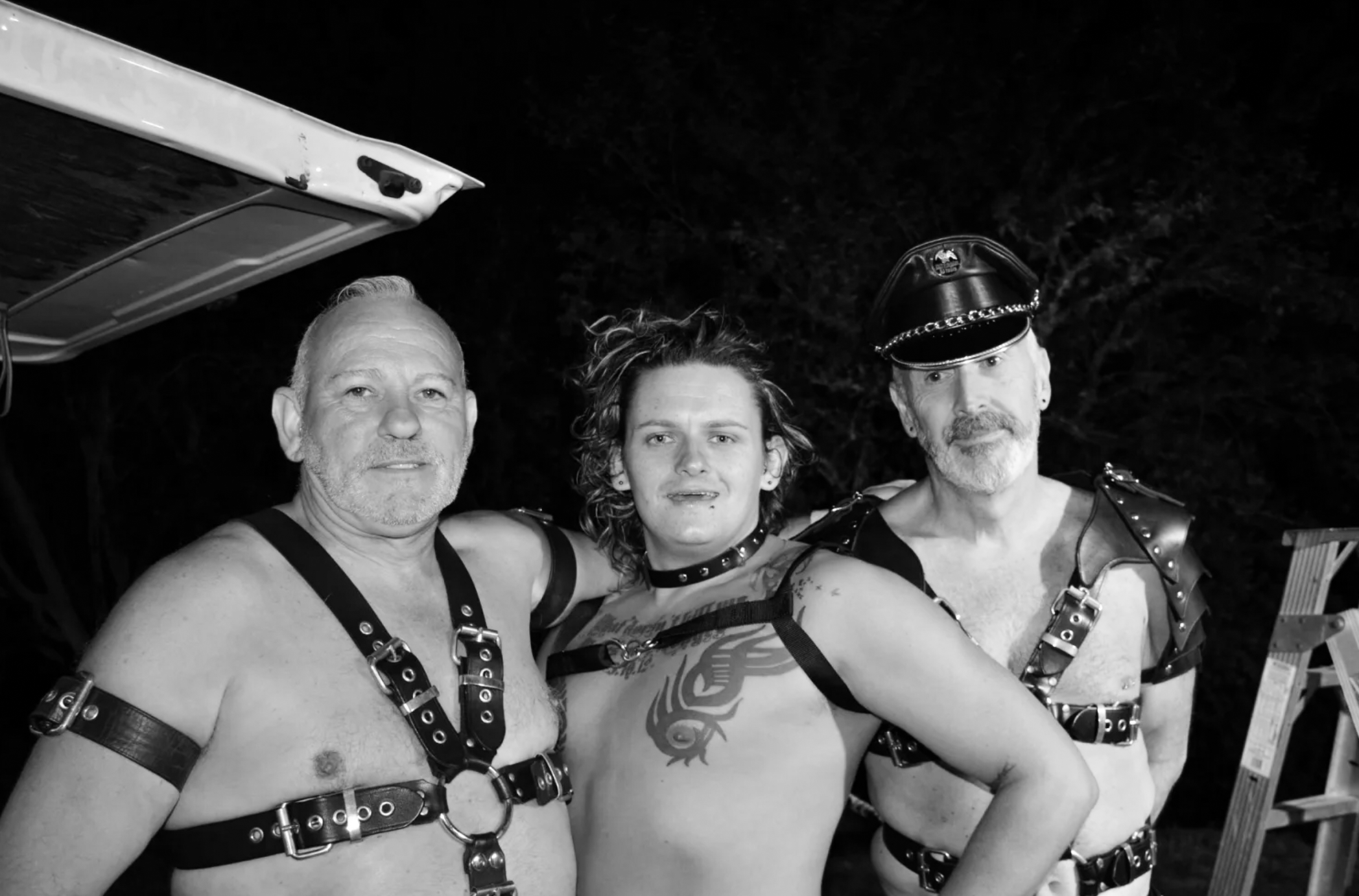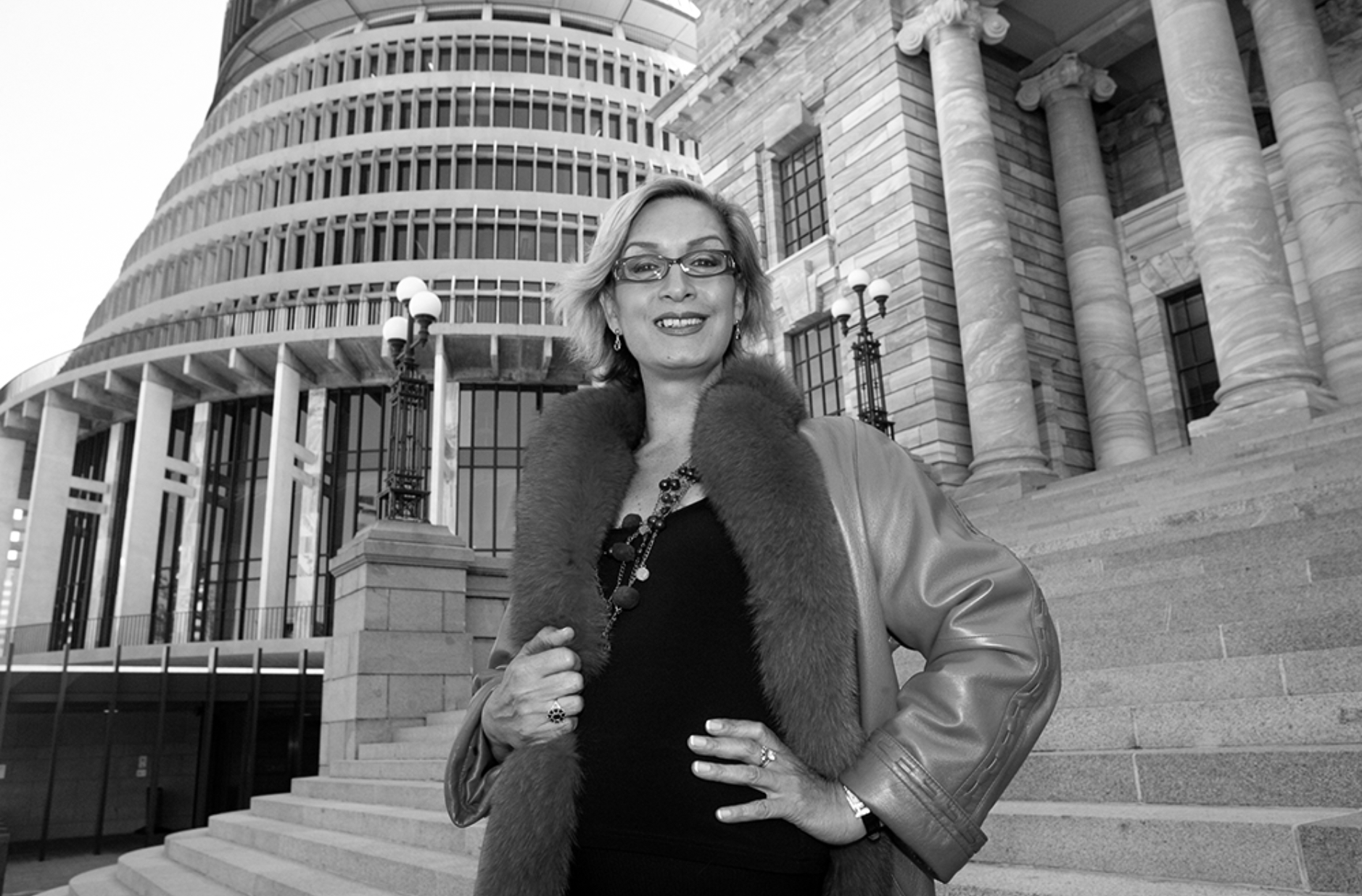The Rural Road to Acceptance: New Zealand’s history of queers in the wopwops
Queer history isn’t just confined within the Sky Tower and Beehive. Our main cities Auckland and Wellington’s have faced explosive fights to liberation, but through farmland, camps, guitars and quilts, a quiet resistance grew.
Dotted around Aotearoa lies tales of rebellion, expression and community. From the cliffs of Cape Reinga to the salty pits of Bluff, queerness exists everywhere and always will.
NZ’s first lesbian marriage (kind of) down in Dunedin
Amy Bock dressed as Percy Redwood. Photo / The Alexander Turnbull Library
Con artist Amy Bock plagued Dunedin in the late 18th century, flipping between a distinguished gentleman and a distressed lady.
According to the novel The Life and Exploits of Amy Bock by Jenny Coleman, she had a fondness for pranks. One of her infamous tricks was purchasing multiple coffins and sending them all to the same family.
After becoming New Zealand’s most wanted female criminal, Amy decided to make some changes. She posed as ‘Percy Redwood’, a respectable male sheep farmer. Through Percy, Amy became friendly with the wealthy Ottaway family who arranged a marriage with their daughter.
Author Coleman says it’s not clear if Amy was queer, or was just marrying into an influential family as an ultimate scam. Amy was arrested by police shortly after the marriage for impersonating a man and served three years in New Plymouth’s male prison.
Amy’s sexuality and gender identity have been debated by historians, asking the question: Was it queer expression or merely a scam?
Nonetheless, Amy/Percy holds an important role in Aotearoa’s early gender studies.
Waikato’s yodelling lesbians, the Topp Twins
The Topp Twins dressed as their characters ‘Belle and Belle’. Photo / Topp Twins website
More Kiwi than Marmite is the lesbian, yodelling, farmer twins. Dame Jools and Lynda Topp were born in 1958 to a farming family in Huntly, Waikato. The twins began performing at an early age and learnt the ‘Māori strum’ from children on the bus.
Lynda told RNZ in 2018, that coming out as lesbian was never a big deal, that it was just something that happened. The Topps began writing political and queer anthems that addressed issues like Māori land rights, homosexual law reform, and the 1981 Springbok Tour.
In a 1982 episode of Eyewitness News Jools said, “Why people don’t have a problem with it is because we are having a good time, and we are just being honest.” Through their music and comedy, the Topp Twins helped broadened Kiwi’s perceptions of gender and sexuality.
Manawatū’s almost 50-year-old gay summer camp
Three divas at Vinegar Hill Camp. Photo / Vinegar Hill Camp
Just before Palmerston North, you'll pass through the rolling hills of Hunterville. It may seem like the typical landscape on a Kiwi roadie, but hidden in the plains lies Aotearoa’s most iconic queer pageant.
Vinegar Hill has been a gay summer camping area on the Rangitikei River since 1977. It all started when a gay couple from Manawatū pitched their tent in a secluded spot away from societal norms. Homosexuality was still illegal at the time, and the couple chose the location for its tall grass and isolation.
In the following years, the spot became a haven for other male gay couples and closeted individuals wanting connection and community.
But as the popularity grew, unwanted attention followed suit. Cars loads of bigots would drive through the camp, shouting slurs and ransacking tents.
Mason, a seasoned Vinegar Hill camper, told Stuff that the 80s were a bittersweet time. In 1986, the homosexual law reform passed which was a celebration of queer acceptance.
But for Mason, that year was marked by loss, as it was the last camp spent with friends who were HIV positive.
In the 90s, Vinegar Hill become more inclusive, welcoming lesbian campers, trans women and young families. It expanded from the cis male population that had previously dominated the site.
For decades, the camp has had a tradition called the Queen of Vinegar Hill, in which on New Year's Eve a new queen is selected. The camp has New Year competitions like best boobs, best buns and lube wrestling. The elected queen oversees liaising with the Manawatū District Council, organising entertainment and collecting camp taxes.
Today, Vinegar Hill continues to thrive, drawing crowds of up to 1,500 over the Christmas and New Year period.
Wairarapa’s (and the world’s) first trans women mayor, Georgina Beyer
Georgina Beyers outside the Beehive. Photo / NZ Herald
In 1990, a tornado entered the blue collared Carterton wearing heels, armed with a quick wit and a colourful past. She tore up stereotypes for Māori and opened the sheltered rural community to unbashful queerness.
Georgina Beyer had been a sex worker and entertainer in Wellington and Auckland for most of her life. After a sobering sexual assault, Beyer moved to the Wairarapa for a change of pace.
In 2001 documentary Georgie Girl, Carterton local Lianne Karaitiana said Beyer’s arrival caused a bit of a controversy. She said, “It was a new ball game for the people of Carterton.”
Beyer, who disliked the town initially, became immersed in the community and was encouraged to run for council as mayor in 1995. She was the first transgender woman in the world to hold mayoral office.
Later in 1999, Beyer was encouraged to run for Wairarapa MP by Prime Minister Helen Clark. She was up against National’s Paul Henry (not the broadcaster), a religious man and advocate for ‘family values’. He told the press, “I’ve done great many things in my life but I’m still male”. Paul became more unpopular after his homophobic digs at Beyer, and she won the Wairarapa seat with 90% of votes. She became the world's first openly transgender member of parliament.
In the documentary Georgie Girl, Beyer says that her election as MP and mayor was more of a reflection of the rural people who accepted her. During her time as MP, she helped pass the Prostitution Reform Act, increased the use of Te Reo in Government and was influential in passing the legalisation of gay marriage.
After Georgina Beyer’s passing two years ago, the current mayor of Carterton Ron Mark spoke to Stuff about Beyer’s legacy. “You will not find anyone in conservative Carterton, with its seven churches, say anything bad about Georgie.”
The quilt remembering those who died of HIV
In the 1980’s, the AIDS epidemic plagued the queer community with death, sickness and isolation. Yet amid the darkness, a fierce creative shone through, fighting for visibility, love and the right to exist. The New Zealand AIDS Memorial Quilt, was founded in 1988 and grew to a collective 32 panels crafted by friends, family and lovers of the deceased.
Since 1991, the project has visited over 50 New Zealand schools and public displays to encourage dialogue about the syndrome, according to the NZ AIDS Quilt website.
Panel in the bottom right corner remembers Ian. Photo / Te Papa Collection
One part of the quilt is a painting on hard canvas of a ragged-looking farmer in front of rolling hills. The quilt was painted by Welby Ings to memorialise his relationship with a dairy farmer from Northland.
In the Te Papa Archives, Welby said that he met his partner, Ian, in a gay nightclub in Auckland. Welby said he noticed Ian was a fellow framer due to the cow shit stained on his trousers.
The two fell in love and both moved to work on a farm in Waikato. Welby moved overseas and while he was gone, Ian became HIV positive and the two broke up. Six months later, Ian died. To process his grief, Welby painted a quilt panel.
He wrote, “I painted his face so it would be soft, and the land would be hard (so eventually it would crack), because when I went back down to where we’d worked, again I’d expected things to be the same.”
Welby says that the quilt wasn’t a very ‘camp’ thing, "It’s gumboots and towropes – but sometimes, for some gay men, that’s what love is.” Welby’s quilt is one of many created through pain and love to memorialise a New Zealander lost silently.





